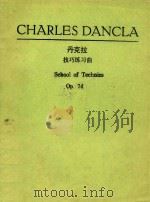《Histological and Histochemical Technics》
| 作者 | Harold A.Davenport 编者 |
|---|---|
| 出版 | W.B.Saunders Company. |
| 参考页数 | 401 |
| 出版时间 | 1960(求助前请核对) 目录预览 |
| ISBN号 | 无 — 求助条款 |
| PDF编号 | 818131288(仅供预览,未存储实际文件) |
| 求助格式 | 扫描PDF(若分多册发行,每次仅能受理1册) |
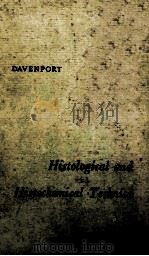
Part Ⅰ.Theory and Practice of Histological Technic:General Applications1
Chapter 1Histological Specimens3
Sources and Types of Material4
Procurement of Specimens5
Normal Tissues5
Pathological Tissues8
Embryos and Cultured Tissue8
Kinds of Preparations9
Whole Mounts10
Sections11
Teased Preparations11
Smears12
Living and Preserved Material15
Labels17
Chapter 2Some Phenomena Related to Tissues19
The Living and the Dead19
Cellular Membranes in Unfixed and Fixed Tissues21
Osmotic Pressure21
Isotonic,Hypertonic and Hypotonic Solutions22
Source of Osmotic Pressure22
Calculation of an Isotonic Solution23
Isotonic Solutions Containing a Mixture of Ingredients23
Hydrogen Ion Concentration24
The Meaning of pH24
Strength of Acids and Bases25
Buffer Solutions27
Chapter 3Fixation29
Effects of Fixing Agents29
Properties of Fixing Fluids30
Solubilities and Solutions of Reagents33
Effects of Osmotic Pressure35
Classification and Composition of Fixing Fluids35
Choice of Fixation38
General Comments on Fixation41
Chapter 4Washing,Dehydrating and Clearing43
Washing43
Wetting46
Dehydration48
Technics of Dehydration50
Clearing52
Chapter 5Embedding53
Special Properties of Embedding Masses53
Choice of Embedding Medium54
1.Water-Soluble Masses55
A.Gelatin and Gums55
B.Polyethylene Glycol55
2.Water-Insoluble Masses56
A.Paraffin56
B.Nitrocellulose57
Sumary of Factors Determining the Type of Embedding58
Embedding in Water-Soluble Masses58
1.Gelatin58
2.Masses Derived from Plant Sources59
3.Polyethylene Glycol66
Embedding in Paraffin60
Grades and Properties61
Ovens62
Filtration of Paraffin63
Permeation of Specimens63
Casting65
Modified Paraffin Embedding Masses68
Embedding in Nitrocellulose69
Names and Properties of Materials69
Embedding Solutions71
Permeation of Specimens73
Gelation of Nitrocellulose Solutions75
Technics of Embedding with Nitrocellulose76
Miscellaneous Comments and Cautions79
Double Embedding80
Embeddingin Plastic81
Methacrylate Embedding82
Chapter 6Equipment for Sectioning:Knife Sharpening83
Technics83
Sectioning with a Razor83
Sectioning with a Regular Microtome84
Microtome Knives and Accessories87
Blades87
Backs87
Handles88
Safety Razor Blade Holders88
Knife Sharpening89
Edge of the Knife90
Grinding and Polishing90
1.Hones91
2.Technic of Honing91
3.Honing with a Lap of Plate Glass93
4.Stropping94
Honing Machines98
Requirements for Ultrathin Sectioning99
Glass Knives100
Steel Knives100
Chapter 7Technic of Sectioning105
Frozen Sections105
Technic106
Paraffin Sections108
Affixing Blocks to Carriers108
Sectioning109
Formation of Ribbons112
Handling and Storing114
Nitrocellulose Sections115
Block Carriers116
Mounting of Blocks116
Technic of Cutting117
Serial Sections118
Disposition of Waste Embedding Material120
Care of Block Carriers120
Sectioning Doubly Embedded Material120
Chapter 8Mounting and Covering121
Mounting Paraffin Sections121
Coating Slides with Albumen Adhesive122
Affixing Sections to Slide123
Practical Suggestions125
Covering Mounted Paraffin Sections127
Mounting and Covering Nitrocellulose Sections127
Attaching Unstained Sections127
Mounting Stained Sections128
Flattening Covered Nitrocellulose Sections130
Mounting and Covering Frozen Sections131
Mounting Media132
Water-Soluble Mounting Media132
Water-Insoluble Mounting Media133
Chapter 9Staining135
Types of Staining Agents136
Synthetic Dyes136
Water-Soluble Dye Reactions137
Water-Insoluble Dye Reactions137
Natural Dyes138
Metallic Stains139
Pigments140
General Procedure of Staining140
Glassware,Hydration and Dehydration141
Paraffin Sections141
Nitrocellulose Sections144
Frozen Sections144
Progressive and Regressive Staining145
Differentiation146
Mordants149
Dehydrating,Clearing and Mounting150
Dehydration150
Clearing152
Mounting Media152
Cover Glasses154
Shape,Size and Thickness154
Cleaning Cover Glasses155
Staining Technics156
Original Methods and Modifications156
The Steps of a Technic157
Abridgment in Descriptions of Technics157
Stains and Chemicals158
Stains158
Chemicals159
Solutions Based on Percentage159
Solutions Based on Normality161
Part Ⅱ.Formulas and Specific Application of Procedures163
Chapter 10Fixing Fluids165
F1.Formalin solution165
F2.Formalin-acetic165
F3.Formalin-picric-acetic166
F3a.Formalin-picric-trichloracetic166
F4.Carnoy's fluids166
F5.Carnoy-Lebrun fluid167
F6.Ohlmacher's fluid167
F7.Zenker's fluid167
F8.Müller's fluid168
F9.Orth's fluid168
F9a.Regaud's fluid168
F10.Sublimate-acetic168
F11.Zenker-formalin mixtures168
F12.Gilson's fluid169
F13.Petrunkewitch's nitric-acetic-sublimate169
F14w,F14s.Flemming's fluids169
F15.Flemming's fluid without acetic acid170
F16.Chamberlain's fixative170
F17.Navashin's fluid171
F18.Randolph's CRAF171
F19.Champy's fluid171
F20.Heidenhain's SUSA171
F21-1,F21-2.Worcester's fluids172
F22.Sublimate-formalin-acetic(for plant tissues)172
F23.Variation of formalin-mercuric chloride fixative173
Decalcifying Fluids173
F24.Alcoholic nitric acid for decalcification173
F25.Formic acid-sodium citrate mixture173
F26.Chelating agent for decalcification174
Chapter 11Staining Solutions175
Hematoxylin Solutions175
S1.Weigert-type stain176
S2.Mayer's hemalum178
S3.Mayer's acidified hematoxylin178
S4.Ehrlich's acid hematoxylin178
S5.Harris'formula179
S6.Delafield's hematoxylin solution179
S7.Mallory's phosphotungstic acid hematoxylin179
S8.Heidenhain method180
Carmine Solutions181
S9.Grenacher's alum-carmine solution181
S10.Grenacher's borax carmine181
S11.Mayer's carmalum182
S12.Mayer's paracarmine182
S13.Acetocarmine182
S14.Moree's iron-acetocarmine mixtures183
Solutions of Synthetic Dyes and Other Staining Agents184
S15.Aldehyde-fuchsin184
S16.Schiff's leucofuchsin reagent186
Chapter 12Staining in the Block189
Block Staining with Dyes189
One-Color Block Stains189
M1.Carmine189
M2.Hematoxylin192
M3.Toluidine blue method193
Two-Color Block Stain194
M4.Picro-Feulgen method194
Block Staining by Metallic Impregnation195
1.Osmic Acid195
M5.Bruesch's(1942)procedure195
M6.Marchi's method,Swank-Davenport modification196
M7.Myelin-sheath stain forperipheral nerves198
M8.Kopsch's method for the Golgi apparatus198
2.Gold Chloride199
M9.Ranvier's(1880)method199
M10.Wunderer's(1908)method200
M11.Method of Corrington201
3.Silver Nitrate202
M12.Demonstration of intercellular boundaries202
Stains for Nervous Tissue203
A.Golgi-Type Stain203
M13.Golgi's original method204
M14.Golgi's rapid process205
M15.Porter's and Davenport's(1949)modification of the Golgi method206
M16.Fox's(1951) zinc chromate-Colgi method206
B.Cajal-Type Stain207
M17.Cajal's formula 3208
M18.Ranson's(1911)pyridine-silver method209
M19.Perez(1931)-Nonidez(1939)method210
C.Bielschowsky-Type Stain211
M20.Bielschowsky's(1909)method,slightly modified212
4.Mercuric Chloride214
M21.Golgi-Cox method214
Chapter 13Staining Sections217
Section Stains with Dyes217
Single-Dye Stains217
1.Iron-Hematoxylin Methods217
A.For Mitochondria218
M22.Regaud's method218
B.For Nuclei219
M23.Iron-hematoxylin differentiated by picric acid219
M24.Mordanting fixation for iron-hematoxylin219
C.For Myelin Sheaths220
M25.Pal-Weigert method;Kapper's modification220
M26.Pal-Weigert method;Clark and Ward(1943)modification221
2.A Stain for General Use222
M27.Chlorazol black E222
3.Stains for Nerve Cells223
M28.Thionin stains223
A.Progressive Staining223
B.Regressive Staining224
M29.Cresyl violet stain224
M30.Cresyl violet acetate stain for frozen sections225
4.Oil-Soluble Dyes for Staining Lipids225
M31.Oil-soluble dye in a water-alcohol mixture226
Double-Dye Stains227
1.Hematoxylin-Eosin Methods227
M32.Delafield's hematoxylin and eosin Y228
M33.Hematoxylin-eosin stain for formalin-fixed tissue229
2.Azures and Eosins231
M34.Wright's method for blood232
M35.Giemsa stain233
M36.Lillie's azure A-eosin B method for sections234
M37.Haynes' azure-eosin stain for tissue235
M38.Mallory's phloxine-methylene blue stain235
M39.Field's method for blood parasites236
3.Safranin and Fast Green237
M40a.Safranin-fast green method237
M40b.Safranin-fast green method237
4.Gram's Stain238
M41.Gram stain for bacteria in tissues238
M42.Hucker's modification of the gram stain for bacteria239
5.Methyl Green and Pyronin(Basic Dyes)240
M43.Methyl green-pyronin method240
Multiple-Dye Stains243
M44.Van Gieson's stain(with hematoxylin)244
M45.Massonn's trichrome stain(1928),supplemented from Foot(1933)245
M46.Aniline blue collagen stain246
M47.Pianese Ⅲb stain(1896)247
M48.Flemming's triple stain(1891),as modified for plant material by Margolena(1935)247
M49.Quad stain248
Section Stains with Metals249
Silver Impregnations250
1.Cajal Type250
M50.Staining nerve fibers in unmounted nitrocellulose sections250
2.Bielschowsky Type251
M51.Staining peripheral nerve elements252
M52.Roger's method for paraffin sections253
M53.Gold toning254
3.Direct Impregnation with Diammino Silver255
Neurological Methods255
M54.Del Rio Hortega's method for oligodendroglia256
M55.Staining neuroglia in paraffin sections257
M56.Staining oligodendroglia and microglia in nitrocellulose sections257
Methods for Connective Tissue257
M57.Periodic acid-Foot stain for connective tissue258
4.Silver Proteinate Staining(Bodian Type)259
M58.Bodian's Protargol method259
M59.Two-hour silver method261
Impregnation with Gold261
M60.Cajal's gold-sublimate method261
Part Ⅲ.Histochemistry263
Chapter 14Historical Introduction;Objects and Requirements of Histochemistry265
Introduction and Objectives265
Requirements for Histochemical Technics267
Chapter 15Inorganic Constituents of Tissues271
Anionic Material271
Chlorides271
M61.Method for chlorides271
Fluoride,Bromide and Iodide272
Carbonate273
Sulfate274
M62.Method for free sulfate274
Phosphate275
M63.Phosphate in nucleic acids275
Other anions276
Cationic Material276
Sodium276
Potassium277
M64.Method for potassium277
Calcium and Magnesium278
M65.Dahl's method for calcium279
Iron and Copper280
M66.The ferrocyanide'reaction281
M67.The demonstration of copper by dithiooxamide283
Masked Iron283
M68.Nonionized iron283
M69.Schmelzer's thiocyanate method for iron283
Trace Elements284
Chapter 16Organic Constituents of Tissues:Polysaccharides287
Group Ⅰ.Carbohydrate Type288
Starch289
M70.Durable iodine stain for cellulose,starch and glycogen290
Glycogen290
M71.Best's carmine stain for glycogen294
Fructans(Fructosans)295
M72.Tests for inulin296
Galactan(Galactogen)296
Cellulose297
M73.Iodine-lithium chloride method for cellulose297
Group Ⅱ.Mucopolysaccharides298
Neutral Mucopolysaccharides299
Chitin299
Pectin300
M74.Ruthenium red stains301
Hemicellulose302
Acid Mucopolysaccharides303
Simple Acid Mucopolysaccharides303
Complex Acid Mucopolysaccharides304
M75.Metachromatic staining;method of Kramer and Windrum305
Basophilia306
Iron Absorption by Acid Mucopolysaccharides307
M76.Hale's method for acid polysaccharides in animal tissues307
M77.Ferric mannitol(pH5.0)method of Lillie and Mowry308
Periodic Acid-Schiff (PAS)Procedure for Polysaccharides309
Chapter 17Organic Constituents of Tissues:Proteins and Amino Acids311
Proteins311
The Gram Reaction313
M78.Gram's stain for tissue314
Critical Analysis of Protein Staining315
Demonstration of Protein in General316
M79.Mercuric-bromphenol blue staining of protein316
Amino Acids317
M80.Protein-bound amino radicals318
M81.The ninhydrin reaction319
Tyrosine320
M82.Millon's reaction for tyrosine320
M83.Histochemical recognition of phenols321
Histidine,Tryptophane and Tyrosine322
Tetrazotized Benzidine322
M84.Azo reaction with coupling323
Tryptophane323
M85.The tryptophane reaction323
M86.Reaction for 3-indolyl derivatives324
M87.Method for derivatives of indole324
Arginine325
M88.The Sakaguchi reaction for arginine325
M89.The improved Sakaguchi reaction adapted to histochemistry326
Cysteine,Cystine and Methionine327
M90.Nitroprusside test for SH radicals328
M91.Ferric ferricyanide reduction329
M92.Protein-bound sulfhydryl330
M93.Demonstration of sulfhydryl and disulfide331
M94.Demonstration of disulfide331
Chapter 18Organic Constituents of Tissues:Lipids333
Classification of Typical Lipids333
Atypical Lipids and Lipoproteins335
Means of Identification of Lipids337
Fats and Phospholipids338
M95.Neutral fat and fatty acid338
M96.Baker's test for phospholipids339
M97.The plasmal reaction340
Sterols and Steryl Esters342
M98.Acetic-sulfuric test for cholesterol;original version from Schultz342
M99.Bismuth trichloride method for sterols343
Waxes344
Rubber345
M100.Oil blue NA stain for latex345
M101.Frozen-section method for latex345
Chapter 19Enzymes347
Hydrolases349
Esterases349
M102.Naphthyl acetate method for esterases351
M103.The Tween method for lipase-type esterases351
M104.Demonstration of esterase by the production of an indigo dye352
Acid and Alkaline Phosphatases353
M105.Alkaline phosphatase;cobalt sulfide method353
M106.A1kaline phosphatase by an azo-dye reaction354
M107.Acid phosphatase;dye method355
M108.Lead acetate method for acid phosphatase356
M109.Phosphamidase357
Other Hydrolases358
Transferases and Oxidoreductases358
Oxidases360
M110.Dihydroxyphenylalanine oxidase reaction361
M111.Demonstration of tryosinase,as used by Fitzpatrick,et al.and by Foster and Cook361
M112.Indophenol oxidase(cytochrome oxidase)reactions362
Peroxidases364
M113.The benzidine method for blood pigments365
M114.The Lison-Dunn leuco-dye method for peroxidase366
Dehydrogenases67
M115.Succinic dehydrogenase localization368
Lyases and Syntheases368
M116.Demonstration of carbonic anhydrase369
Isomerases and Racemases370
Chapter 20Applications of Schiff's Reagent371
M117.Nucleal reaction of Feulgen and Rossenbeck372
M118.Periodic acid-Schiff(PAS)reaction373
M119.Peracetic acid-Schiff reaction374
Concluding Comments on Histochemical Methods375
Bibliography377
Index389
1960《Histological and Histochemical Technics》由于是年代较久的资料都绝版了,几乎不可能购买到实物。如果大家为了学习确实需要,可向博主求助其电子版PDF文件(由Harold A.Davenport 1960 W.B.Saunders Company. 出版的版本) 。对合法合规的求助,我会当即受理并将下载地址发送给你。
高度相关资料
-
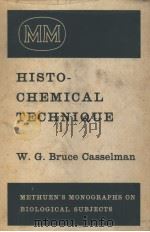
- HISTOCHEMICAL TECHNIQUE
- NEW YORK JOHN WILEY & SONS INC
-

- Technics and praxis
- 1979 D. Reidel Pub. Co.
-

- Histological and Histochemical Technics
- 1960 W.B.Saunders Company.
-

- TECHNICS OF PLANT HISTOCHEMISTRY AND VIROLOGY
- 1952 THE NATIONAL PRESS
-
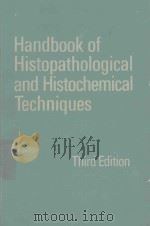
- HANDBOOK OF HISTOPATHOLOGICAL AND HISTOCHEMICAL TECHNIQUES THIRD EDITION
- 1974 BUTTERWORTH & CO PUBLISHERS LTD
-
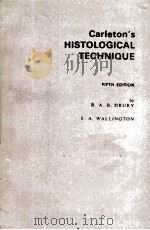
- CARLETON'S HISTOLOGICAL TEHNIQUE
- 1980 OXFORD UNIVESITY PRESS
-

- Orthodontics: practice and technics
- 1957 Lippincott
-
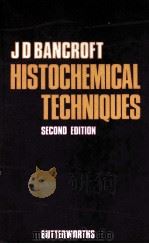
- Histochemical techniques
- 1975 Butterworths
-
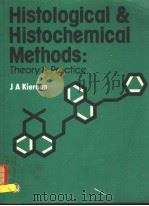
- HISTOLOGICAL & HISTOCHEMICAL METHODS:THEORY & PRACTICE
- 1981 PERGAMON PRESS
-

- Histochemical and immunohistochemical techniques
- 1991 Chapman & Hall
-
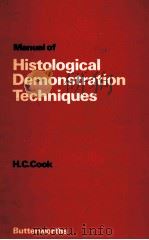
- Manual of Histological Demonstration Techniques
- 1974 Butterworth-Heinemann [Imprint]Elsevier Science & Technology Books
提示:百度云已更名为百度网盘(百度盘),天翼云盘、微盘下载地址……暂未提供。➥ PDF文字可复制化或转WORD


